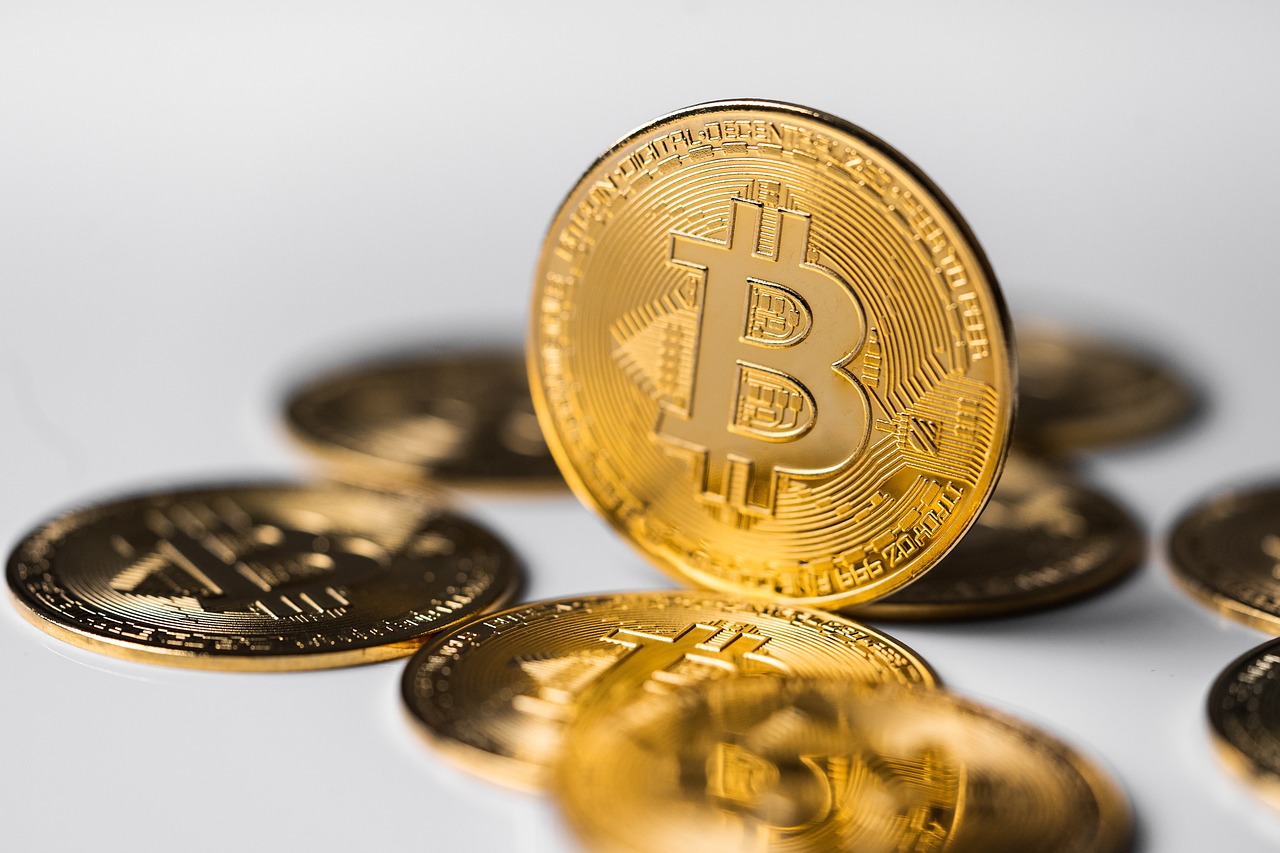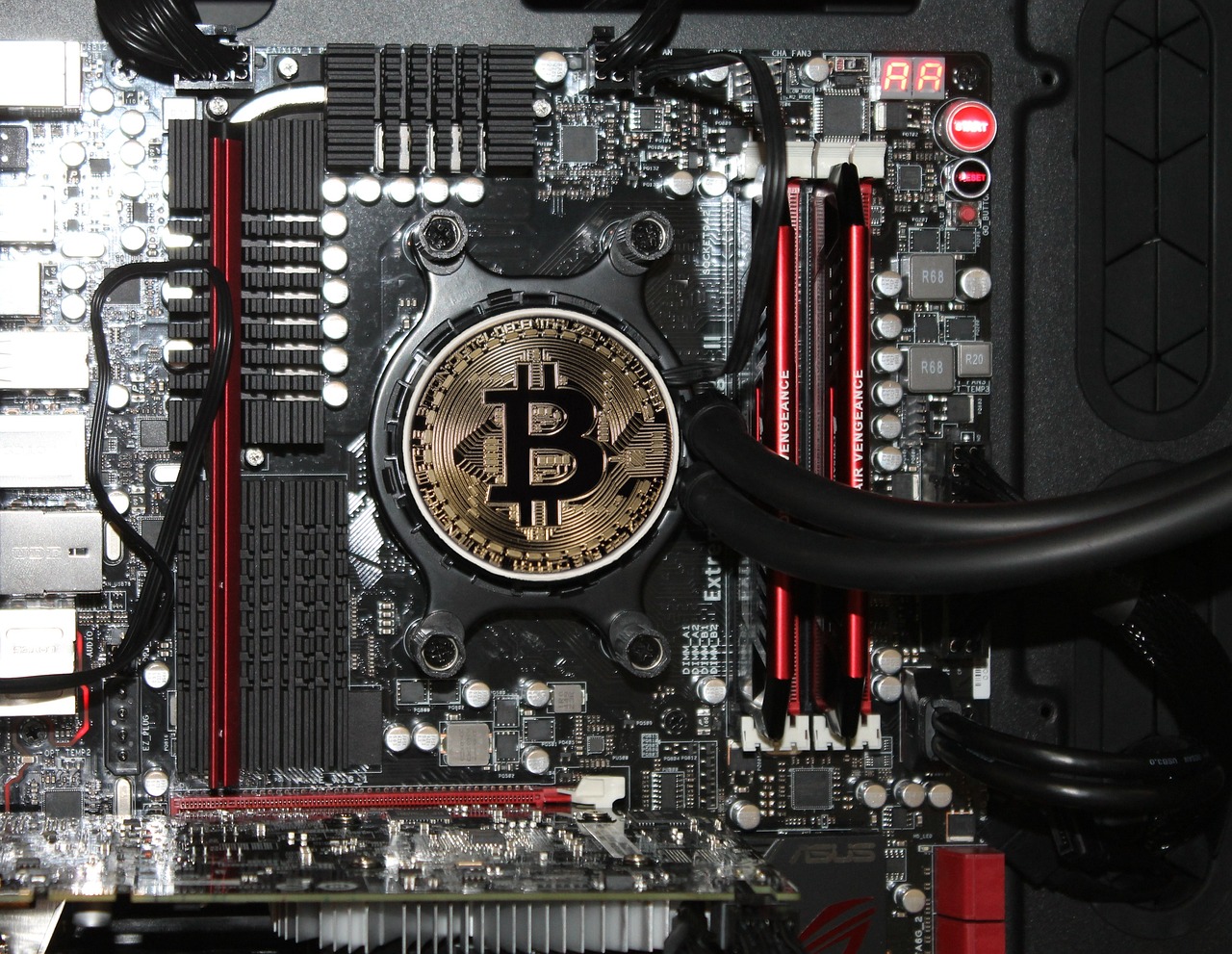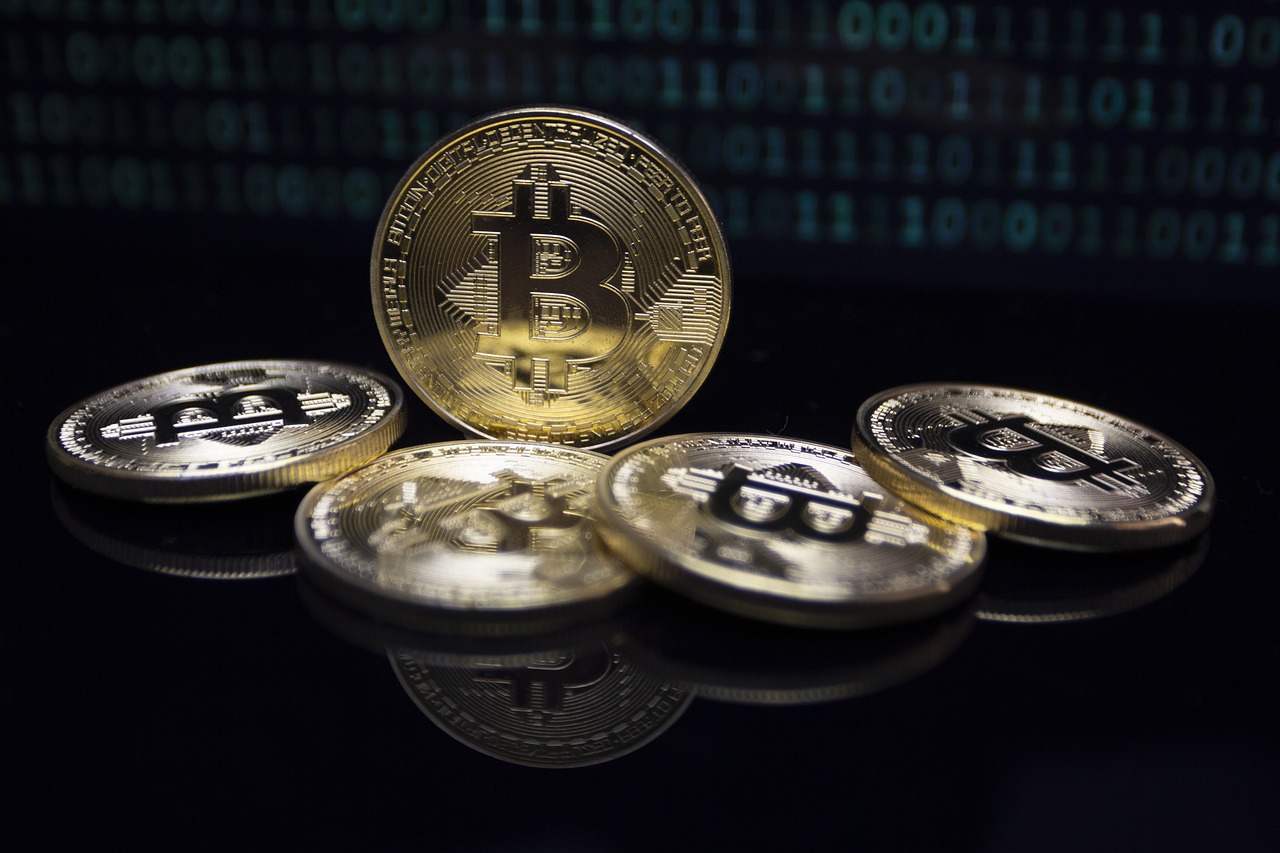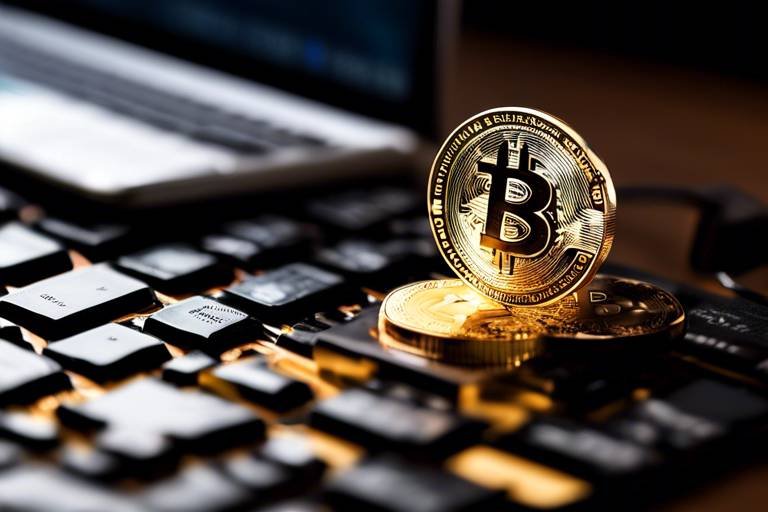How to Address the Legal Challenges of Cryptocurrency Exchanges
The world of cryptocurrency exchanges is akin to navigating a vast ocean filled with both opportunities and treacherous waters. As more individuals and businesses dive into the realm of digital currencies, the legal challenges associated with these exchanges have become increasingly complex. The rapid evolution of technology combined with varying regulations across jurisdictions creates a unique environment that demands both attention and expertise. In this article, we will explore the multifaceted legal landscape that cryptocurrency exchanges must navigate, focusing on regulatory compliance, risk management, and best practices to ensure that they operate within the bounds of the law while fostering innovation and user trust.
One of the first hurdles that cryptocurrency exchanges face is understanding the regulatory frameworks that govern their operations. Different countries have adopted various approaches to regulating cryptocurrencies, leading to a patchwork of laws that can be challenging to decipher. For instance, while some nations embrace cryptocurrencies and blockchain technology, others impose strict regulations or outright bans. This inconsistency can create confusion and uncertainty for exchanges that operate internationally. Therefore, it is crucial for these platforms to stay informed about the latest developments in cryptocurrency regulation and to engage with legal experts who can provide guidance on compliance.
Compliance with Anti-Money Laundering (AML) laws is another critical aspect that exchanges must prioritize. AML regulations are designed to prevent illicit activities such as money laundering and terrorist financing. For cryptocurrency exchanges, this means implementing robust compliance programs that include thorough customer due diligence and ongoing monitoring of transactions. Establishing a culture of compliance not only helps exchanges avoid legal repercussions but also builds trust with their user base, which is essential for long-term success in the industry.
A key component of AML compliance is the Know Your Customer (KYC) process. Exchanges must verify the identities of their users to ensure that they are not facilitating illegal activities. This involves collecting personal information and documentation from users, which can be a daunting task. However, by employing effective KYC procedures, exchanges can enhance their security measures while also fulfilling their legal obligations. It's a balancing act that requires careful consideration of user experience and regulatory demands.
Implementing KYC procedures effectively involves several practical steps. Exchanges should consider the following:
- Utilizing advanced identity verification technologies to streamline the process.
- Regularly updating their KYC policies to comply with changing regulations.
- Providing clear communication to users about what information is required and why.
Despite the importance of KYC compliance, many exchanges encounter challenges in this area. Issues such as user resistance, technical limitations, and evolving regulatory expectations can complicate the implementation of effective KYC measures. To overcome these challenges, exchanges should adopt a proactive approach by investing in training for their staff and leveraging technology to enhance their verification processes.
Another vital aspect of legal compliance for cryptocurrency exchanges is the monitoring of transactions for suspicious activity. This involves implementing sophisticated transaction monitoring systems that can detect unusual patterns or behaviors. By being vigilant and responsive to potential red flags, exchanges can fulfill their legal obligations to report suspicious activities while also protecting themselves from potential legal repercussions.
As we delve deeper into the legal landscape of cryptocurrency exchanges, it becomes clear that understanding tax obligations is equally essential. Cryptocurrency transactions can have significant tax implications, and exchanges must ensure that they are compliant with local tax authorities. This includes accurately reporting transactions and capital gains, which can be particularly complex given the volatile nature of cryptocurrencies.
In conclusion, addressing the legal challenges of cryptocurrency exchanges requires a multifaceted approach that encompasses regulatory compliance, risk management, and ongoing education. By staying informed about the evolving legal landscape and adopting best practices, exchanges can navigate these challenges effectively while fostering a secure and trustworthy environment for their users.
Q: What are the main legal challenges faced by cryptocurrency exchanges?
A: Cryptocurrency exchanges face challenges such as regulatory compliance, AML and KYC requirements, tax obligations, and potential legal risks associated with user transactions.
Q: How can exchanges ensure compliance with AML laws?
A: Exchanges can ensure compliance by implementing robust AML programs, conducting thorough KYC checks, and monitoring transactions for suspicious activity.
Q: What is the significance of KYC procedures?
A: KYC procedures help exchanges verify the identity of their users, which is essential for preventing illicit activities and ensuring compliance with legal regulations.
Q: How do tax obligations affect cryptocurrency exchanges?
A: Exchanges must comply with local tax regulations, including accurate reporting of transactions and capital gains, which can be complex due to the nature of cryptocurrency markets.

Understanding Regulatory Frameworks
The world of cryptocurrency exchanges operates within a complex web of regulatory frameworks that vary significantly across different jurisdictions. Understanding these frameworks is crucial for exchanges aiming to navigate the legal landscape effectively. At the core of these regulations are laws designed to prevent fraud, protect consumers, and ensure financial stability. As cryptocurrencies continue to gain traction, regulators are increasingly focusing on establishing clear guidelines that govern their use and the operations of exchanges.
To grasp the regulatory environment, it’s essential to recognize that these frameworks are not uniform. For instance, in the United States, the regulatory landscape is fragmented, with various agencies such as the SEC (Securities and Exchange Commission), CFTC (Commodity Futures Trading Commission), and FinCEN (Financial Crimes Enforcement Network) each having their own jurisdiction over different aspects of cryptocurrency. This can create a challenging environment for exchanges, as they must ensure compliance with multiple regulatory bodies. The table below outlines some key regulatory bodies and their roles:
| Regulatory Body | Role |
|---|---|
| SEC | Regulates securities and protects investors |
| CFTC | Regulates commodity futures and options markets |
| FinCEN | Enforces AML laws and combats financial crimes |
| IRS | Tax regulations and reporting requirements |
In contrast, countries like Japan and Switzerland have established more streamlined regulatory frameworks that aim to foster innovation while ensuring consumer protection and financial integrity. For example, Japan's Financial Services Agency (FSA) has implemented a licensing system for cryptocurrency exchanges, which requires them to adhere to strict compliance measures. This proactive approach not only enhances user trust but also encourages legitimate businesses to thrive in a regulated environment.
Furthermore, as cryptocurrencies are inherently global, exchanges often find themselves navigating a patchwork of international regulations. This situation is compounded by the rapid evolution of technology that underpins cryptocurrencies, making it challenging for regulators to keep pace. The need for international cooperation and harmonization of regulations is becoming increasingly evident, as different countries may have conflicting rules that can stifle innovation and create barriers to entry for exchanges.
As we delve deeper into the complexities of regulatory frameworks, it’s essential for cryptocurrency exchanges to implement robust compliance programs. This means not only understanding the current laws but also staying abreast of potential changes in legislation. Engaging with legal experts and participating in industry discussions can provide valuable insights into upcoming regulatory trends and help exchanges adapt accordingly.
In conclusion, the regulatory frameworks surrounding cryptocurrency exchanges are multifaceted and constantly evolving. By understanding these regulations and proactively addressing compliance challenges, exchanges can better position themselves for success in this dynamic industry. As the landscape continues to shift, those who remain informed and adaptable will be the ones who thrive.

Compliance with Anti-Money Laundering (AML) Laws
In the world of cryptocurrency, is not just a regulatory checkbox—it's a crucial aspect of maintaining the integrity and trustworthiness of the entire ecosystem. As cryptocurrency exchanges operate in a largely decentralized and anonymous environment, they are prime targets for illicit activities, including money laundering and fraud. This makes it imperative for these exchanges to implement robust AML compliance programs to safeguard against legal repercussions and reputational damage.
AML regulations vary significantly from one jurisdiction to another, but they generally require exchanges to establish procedures that identify, assess, and mitigate the risks of money laundering. The cornerstone of an effective AML program is a comprehensive risk assessment that helps the exchange understand its vulnerabilities and the potential threats posed by its user base. This assessment should be dynamic, regularly updated to reflect changes in the regulatory landscape and the evolving tactics of criminals.
One of the most effective strategies for AML compliance is the implementation of a Know Your Customer (KYC) program. By verifying the identities of their users, exchanges can significantly reduce the risk of facilitating illegal transactions. A well-structured KYC process not only helps in complying with AML regulations but also enhances the overall security of the platform. However, KYC is just one piece of the puzzle. Exchanges must also establish ongoing transaction monitoring systems to detect and report suspicious activities.
To illustrate how AML compliance can be structured, consider the following key components:
| Component | Description |
|---|---|
| Risk Assessment | Regularly evaluate the risks associated with users and transactions to tailor compliance measures effectively. |
| KYC Procedures | Implement identity verification processes to ensure users are who they claim to be. |
| Transaction Monitoring | Use automated systems to track transactions for unusual patterns that may indicate money laundering. |
| Reporting Obligations | Establish protocols for reporting suspicious activities to relevant authorities as required. |
While establishing an AML program may seem overwhelming, it is crucial to remember that the goal is to create a culture of compliance within the organization. This involves training staff on AML regulations and the importance of vigilance in identifying suspicious activities. Furthermore, fostering an environment where employees feel empowered to report concerns can significantly enhance the effectiveness of the AML program.
However, the road to compliance is fraught with challenges. Many exchanges struggle with the balance between rigorous compliance measures and maintaining a seamless user experience. Users often express frustration with lengthy verification processes, which can lead to potential loss of business. Therefore, exchanges must innovate ways to streamline KYC processes without compromising on security. This could involve leveraging technology such as biometric verification or artificial intelligence to expedite identity checks while still adhering to AML standards.
In conclusion, compliance with AML laws is a multi-faceted challenge that requires a proactive and well-structured approach. By investing in robust compliance frameworks, cryptocurrency exchanges not only protect themselves from legal repercussions but also contribute to the overall legitimacy of the cryptocurrency industry. As the regulatory landscape continues to evolve, staying ahead of AML compliance will be essential for exchanges aiming to thrive in this competitive market.
- What is the purpose of AML laws? AML laws are designed to prevent money laundering and other illicit financial activities by requiring businesses, including cryptocurrency exchanges, to implement measures that identify and report suspicious transactions.
- How does KYC fit into AML compliance? KYC is a critical component of AML compliance, as it involves verifying the identities of users to prevent criminal activities and ensure that exchanges are not facilitating money laundering.
- What challenges do exchanges face with AML compliance? Exchanges often struggle with balancing rigorous compliance measures with user experience, as lengthy verification processes can deter potential customers.
- How can technology aid in AML compliance? Technology can enhance AML compliance through automated transaction monitoring systems, biometric verification, and artificial intelligence, making the process more efficient and secure.

Know Your Customer (KYC) Requirements
In the world of cryptocurrency exchanges, the term Know Your Customer (KYC) is more than just a compliance checkbox; it’s a vital part of building trust and security in an otherwise volatile environment. KYC regulations are designed to verify the identity of users, ensuring that exchanges are not inadvertently facilitating illegal activities such as money laundering or fraud. This process involves collecting and verifying personal information from users, which can include their name, address, date of birth, and identification documents. By implementing robust KYC procedures, exchanges not only comply with legal obligations but also enhance their reputation and user trust.
The KYC process can be broken down into several essential components. Initially, users must provide basic information, which is then cross-verified against reliable databases. This is where technology plays a significant role—automated systems can quickly verify identities, reducing the time it takes for users to start trading. However, it’s crucial for exchanges to maintain a balance between rigorous verification and user experience. If the KYC process is too cumbersome, it may deter potential users from signing up.
Moreover, the landscape of KYC is constantly evolving. With the rise of decentralized finance (DeFi) and anonymity-focused cryptocurrencies, regulators are tightening their grip on KYC requirements. This means that exchanges must stay updated with the latest regulations in their operating jurisdictions. Failure to comply can lead to severe penalties, including hefty fines or even the revocation of operating licenses. Therefore, it is essential for exchanges to implement a proactive approach towards KYC compliance, regularly reviewing and updating their procedures to align with regulatory changes.
When discussing KYC, it’s also important to consider the challenges that exchanges may face. For instance, the collection of sensitive user data raises concerns about privacy and data security. Exchanges must invest in advanced security measures to protect this information from breaches. Additionally, they should be transparent with users about how their data will be used and stored. This transparency not only helps in building trust but also aids in compliance with data protection regulations such as the General Data Protection Regulation (GDPR).
In summary, KYC is a critical component of cryptocurrency exchanges that goes beyond mere compliance. It is about creating a secure and trustworthy environment for users. By adopting effective KYC practices, exchanges can mitigate risks, enhance user experience, and maintain compliance with evolving regulations. As the industry continues to grow, the importance of KYC will only become more pronounced, making it a focal point for exchanges aiming to thrive in the competitive landscape of cryptocurrency trading.
- What is KYC in cryptocurrency? KYC stands for Know Your Customer, which refers to the process of verifying the identity of users on cryptocurrency exchanges to prevent fraud and comply with regulations.
- Why is KYC important for exchanges? KYC helps exchanges avoid legal issues, enhances security, and builds trust with users by ensuring that only legitimate individuals can trade.
- What documents are typically required for KYC? Users may need to provide identification documents such as a passport or driver's license, along with proof of address like a utility bill.
- How does KYC affect user experience? While KYC can add steps to the registration process, efficient systems can streamline verification, making it quick and user-friendly.

Implementing KYC Procedures
Implementing Know Your Customer (KYC) procedures is not just a regulatory checkbox for cryptocurrency exchanges; it’s a critical step in building trust and ensuring the security of both the platform and its users. KYC is all about verifying the identity of your customers to prevent fraud, money laundering, and other illicit activities that can tarnish the reputation of your exchange. The process might seem daunting, but with the right approach, it can be streamlined and efficient.
To kick off your KYC implementation, start by establishing a clear policy that outlines the steps and requirements for identity verification. This policy should include the types of documents you will accept, such as government-issued IDs, utility bills, or bank statements, which can serve as proof of identity and address. By laying down these guidelines, you create a transparent process that users can easily understand and follow.
Next, consider integrating automated verification systems that can handle the heavy lifting. These systems can analyze documents and compare them against databases to verify authenticity, significantly speeding up the process while reducing human error. This is crucial in today’s fast-paced world, where users expect quick responses. However, it’s essential to maintain a balance between efficiency and thoroughness. Users should feel secure knowing their information is being handled with care.
Once you have your policy and systems in place, it’s time to implement training for your staff. Ensure that your team understands the importance of KYC and is well-versed in the procedures. They should be equipped to handle any questions or concerns from users regarding the KYC process. A well-trained team can significantly enhance user experience and trust, which are invaluable in the cryptocurrency space.
Moreover, communication plays a vital role. Keep your users informed about what KYC entails and why it’s necessary. A simple, clear FAQ section on your website can address common questions and alleviate concerns. For instance, you might want to explain how long the verification process typically takes, what happens to their data, and the measures you have in place to protect their privacy.
Lastly, it’s crucial to stay adaptable. Regulations around KYC are constantly evolving, and your procedures should reflect these changes. Regularly review and update your KYC policies to ensure compliance with the latest legal requirements. This proactive approach not only protects your exchange from potential legal issues but also positions you as a responsible player in the cryptocurrency ecosystem.
By implementing robust KYC procedures, cryptocurrency exchanges can not only comply with regulations but also foster a safe and trustworthy environment for their users. The journey may seem complex, but the benefits far outweigh the challenges. It's about creating a community where users feel secure, and that is the ultimate goal.

Challenges in KYC Compliance
When it comes to Know Your Customer (KYC) compliance, cryptocurrency exchanges face a myriad of challenges that can complicate their operations. The landscape is not just about adhering to regulations; it’s about navigating a complex web of legal requirements while ensuring a seamless user experience. One of the most significant hurdles is the variability of regulations across different jurisdictions. Each country may have its own set of rules regarding KYC, which can lead to confusion and inconsistency in compliance efforts.
Moreover, the very nature of cryptocurrency transactions—often anonymous and decentralized—adds another layer of difficulty. Exchanges must balance the need for thorough identity verification with the desire to maintain user privacy. This tension can lead to frustrating experiences for users who may feel that their personal information is being scrutinized excessively. The challenge is to implement robust KYC procedures without alienating customers who value their anonymity.
Another challenge is the technological aspect of KYC compliance. Many exchanges struggle with integrating advanced identity verification technologies. While some have made strides in automating the KYC process, others still rely on outdated methods that can slow down onboarding and increase the risk of human error. This can lead to delays in transactions and user dissatisfaction, which ultimately impacts the exchange's reputation.
Additionally, there’s the ever-present risk of fraud and identity theft. As cyber threats continue to evolve, exchanges must stay one step ahead by implementing stringent security measures. However, these measures can be costly and resource-intensive, particularly for smaller exchanges that may lack the necessary infrastructure. The balance between maintaining security and ensuring a smooth user experience is a tightrope walk that many exchanges find challenging.
Finally, the training and development of staff to handle KYC compliance effectively is often overlooked. Many exchanges do not invest adequately in training their teams on the intricacies of KYC regulations, which can lead to compliance gaps. Regular training sessions are essential to keep staff updated on the latest legal requirements and to foster a culture of compliance within the organization.
In summary, the challenges in KYC compliance for cryptocurrency exchanges are multifaceted, involving regulatory variability, user privacy concerns, technological integration, security risks, and staff training. Addressing these challenges requires a strategic approach that balances compliance with user experience, ensuring that exchanges can operate effectively in a rapidly evolving legal landscape.
- What is KYC compliance? KYC compliance refers to the process of verifying the identity of customers to prevent fraud and ensure adherence to regulations.
- Why is KYC important for cryptocurrency exchanges? KYC is crucial for preventing money laundering, fraud, and ensuring that exchanges operate legally within their jurisdictions.
- What are the common challenges faced in KYC compliance? Common challenges include regulatory variability, user privacy concerns, technological integration, security risks, and staff training.
- How can exchanges improve their KYC processes? Exchanges can enhance their KYC processes by investing in technology, providing staff training, and regularly reviewing compliance procedures.

Monitoring Transactions for Suspicious Activity
In the fast-paced world of cryptocurrency, has become a critical component for exchanges aiming to comply with legal standards and protect their users. With the rise of digital currencies, the potential for illicit activities, such as money laundering and fraud, has also escalated. Thus, exchanges must implement robust systems to detect and report any activities that may raise red flags.
Transaction monitoring systems (TMS) play a vital role in this process. These systems analyze transaction patterns and flag any anomalies that could indicate suspicious behavior. For instance, if a user suddenly starts making large withdrawals or transfers to accounts that have been flagged for suspicious activity, the TMS should alert compliance officers to investigate further. This proactive approach not only helps in adhering to legal requirements but also enhances the overall security of the exchange.
Moreover, exchanges can benefit from integrating advanced technologies such as machine learning and artificial intelligence into their monitoring systems. These technologies can help in identifying patterns and trends that may not be immediately obvious to human analysts. By continuously learning from new data, these systems can improve their detection capabilities, making it easier to spot potential threats before they escalate.
It's also essential for exchanges to maintain a comprehensive audit trail of all transactions. This documentation can serve as a valuable resource in case of regulatory inquiries or investigations. By keeping a detailed record, exchanges can demonstrate their commitment to compliance and their efforts to combat suspicious activities. Additionally, regular audits of these monitoring systems can help ensure they remain effective and up-to-date with the latest regulatory changes.
To further enhance their monitoring processes, exchanges should consider implementing a multi-layered approach. This approach may include:
- Establishing clear criteria for suspicious activity that align with regulatory guidelines.
- Conducting regular training sessions for staff on recognizing and responding to suspicious transactions.
- Collaborating with law enforcement and regulatory bodies to share information about emerging threats.
In conclusion, monitoring transactions for suspicious activity is not just a regulatory obligation; it is a critical aspect of maintaining trust and security within the cryptocurrency ecosystem. By investing in robust monitoring systems and fostering a culture of compliance, exchanges can protect themselves and their users from the risks associated with illicit activities.
Q: What types of suspicious activities should exchanges look for?
A: Exchanges should monitor for large or unusual transactions, rapid movement of funds between accounts, and transactions involving high-risk jurisdictions.
Q: How can technology aid in monitoring transactions?
A: Technologies like machine learning and AI can analyze vast amounts of data to identify patterns and anomalies that may indicate suspicious activity.
Q: What should an exchange do if suspicious activity is detected?
A: The exchange should investigate the activity, document findings, and report to relevant authorities if necessary, in accordance with regulatory requirements.

Tax Obligations for Cryptocurrency Exchanges
When it comes to cryptocurrency exchanges, understanding tax obligations is crucial for smooth operations and compliance with regulations. The world of digital currencies is not just about trading; it’s also about ensuring that all financial activities are reported correctly to tax authorities. Each transaction, whether it’s a buy, sell, or trade, can have tax implications that exchanges must navigate carefully. This can feel like a minefield, especially when different countries have varying laws regarding taxation of digital assets.
One of the primary responsibilities of cryptocurrency exchanges is to facilitate accurate reporting for their users. This means that exchanges need to have robust systems in place to track transactions and calculate any potential tax liabilities. A common misconception is that cryptocurrencies are not subject to taxes, but this is far from the truth. In fact, many countries treat cryptocurrencies as property, meaning that capital gains tax may apply whenever a user sells or trades their digital assets.
To ensure compliance, exchanges should consider implementing the following strategies:
- Transaction Tracking: Maintain a comprehensive record of all transactions to provide users with accurate reports at tax time.
- User Education: Offer resources to educate users on their tax obligations related to cryptocurrency transactions.
- Collaboration with Tax Professionals: Work with tax advisors to stay updated on the latest tax laws and regulations affecting cryptocurrencies.
Furthermore, exchanges must be aware of the different reporting requirements that may apply based on their jurisdiction. For instance, in the United States, the Internal Revenue Service (IRS) requires exchanges to report transactions above a certain threshold, and failure to do so can result in hefty fines. In Europe, the EU's Anti-Money Laundering (AML) directives also emphasize the importance of tax compliance, making it imperative for exchanges to align their practices with local laws.
To illustrate the complexity of tax obligations, consider the following table that outlines some key aspects of tax compliance for exchanges operating in various jurisdictions:
| Country | Tax Treatment of Cryptocurrency | Reporting Requirements |
|---|---|---|
| United States | Capital gains tax applies | Report transactions over $20,000 |
| United Kingdom | Capital gains tax applies | Report gains over £12,300 |
| Germany | No tax if held for over 1 year | Report if gains exceed €600 |
| Australia | Capital gains tax applies | Report all transactions |
As the landscape of cryptocurrency continues to evolve, so too will the tax obligations for exchanges. Staying informed about changes in legislation and adapting to new regulations is essential for maintaining compliance and avoiding legal issues. In this fast-paced industry, proactive measures can make all the difference between a thriving exchange and one that faces significant setbacks due to tax-related challenges.
In conclusion, understanding tax obligations is not just a regulatory requirement for cryptocurrency exchanges; it’s a fundamental aspect of building a reputable and trustworthy business. By implementing effective tracking systems, educating users, and staying compliant with local laws, exchanges can navigate the complex world of cryptocurrency taxation with confidence.
- What are the tax implications for cryptocurrency exchanges? Cryptocurrency exchanges must comply with local tax laws, which may include capital gains tax on transactions.
- How can exchanges ensure compliance with tax regulations? By implementing transaction tracking systems and educating users about their tax obligations.
- Do all countries treat cryptocurrency the same for tax purposes? No, tax treatment varies significantly by country, and exchanges must be aware of local regulations.

Understanding Capital Gains Tax
When it comes to cryptocurrency transactions, one of the most significant aspects that exchanges and users alike need to grasp is capital gains tax. This tax is applicable to the profit made from the sale of cryptocurrencies, and understanding it can feel like navigating through a maze. The first thing to know is that capital gains tax applies not only to traditional assets but also to digital currencies. Whenever you sell or exchange your cryptocurrency for a profit, you may trigger a capital gains tax event. But how does this actually work in practice?
The capital gains tax is typically categorized into two types: short-term and long-term. Short-term capital gains apply to assets held for one year or less, and they are taxed at the ordinary income tax rates, which can be quite steep. On the other hand, long-term capital gains apply to assets held for more than one year and are generally taxed at lower rates. This distinction is crucial for cryptocurrency traders who may frequently buy and sell assets. For instance, if you bought 1 Bitcoin at $10,000 and sold it for $15,000 within six months, that $5,000 profit would be considered a short-term capital gain and taxed accordingly. However, if you held that Bitcoin for over a year before selling, you could benefit from the lower long-term capital gains tax rate.
Here’s a quick breakdown of how capital gains tax works:
| Holding Period | Tax Rate |
|---|---|
| Short-term (1 year or less) | Ordinary income tax rates |
| Long-term (more than 1 year) | 0%, 15%, or 20% depending on income |
Now, let’s talk about the responsibilities of cryptocurrency exchanges regarding capital gains tax. Exchanges are required to provide users with accurate transaction records, which are essential for tax reporting. This means that when a user makes a trade, the exchange must track the purchase price, sale price, and the date of the transaction. Such detailed records help users calculate their capital gains accurately, ensuring they comply with tax laws.
However, challenges can arise. Not all exchanges provide comprehensive tax documentation, which can leave users scrambling to piece together their trading history. This lack of transparency can lead to underreporting or overreporting of capital gains, resulting in potential penalties from tax authorities. Therefore, it's crucial for users to keep their own records and consider using third-party tax software designed specifically for cryptocurrency transactions.
In addition to understanding how capital gains tax works, users should also be aware of the concept of like-kind exchanges. While this term was once used to defer taxes on certain trades, recent tax reforms have made it clear that like-kind exchange treatment no longer applies to cryptocurrencies. This means that every sale or exchange of cryptocurrency is a taxable event, and users must report their gains or losses accordingly.
In summary, navigating the world of capital gains tax in the realm of cryptocurrency requires diligence and understanding. As more people invest in digital currencies, the IRS and other tax authorities are becoming increasingly vigilant about compliance. It's essential for both exchanges and users to stay informed about their tax obligations and ensure that they are accurately reporting their transactions to avoid any legal complications down the road.
- What is capital gains tax? - It's a tax on the profit made from selling or exchanging an asset, including cryptocurrencies.
- How is capital gains tax calculated? - It's calculated based on the difference between the purchase price and the sale price of the asset.
- Do I have to report cryptocurrency transactions? - Yes, all cryptocurrency transactions that result in a profit must be reported to tax authorities.
- What records do I need to keep for tax reporting? - Keep track of purchase prices, sale prices, dates of transactions, and any fees associated with trading.

International Tax Compliance
When it comes to cryptocurrency exchanges, navigating the labyrinth of can feel like trying to find your way through a dense fog. Each country has its own set of rules and regulations, and for exchanges operating across borders, this can lead to a complex web of obligations that are crucial to understand. The stakes are high; failing to comply with tax laws can result in hefty fines, legal repercussions, and a tarnished reputation.
One of the primary challenges for cryptocurrency exchanges is the variability in tax treatment of digital assets around the globe. For instance, while some countries classify cryptocurrencies as currency, others may treat them as assets subject to capital gains tax. This discrepancy can lead to confusion, especially for exchanges that facilitate transactions for users from multiple jurisdictions. To mitigate this risk, exchanges must have a robust understanding of the tax regulations in each country where they operate.
Moreover, many jurisdictions are increasingly adopting reporting requirements for cryptocurrency transactions. This means that exchanges need to implement systems that can accurately track and report user transactions to relevant tax authorities. A common approach is to use automated systems that can generate reports in compliance with local regulations. For example, some exchanges utilize blockchain analytics tools to ensure that they maintain accurate records of transactions, which can then be used for tax reporting.
To provide a clearer picture, let’s look at a simplified table that outlines the general tax treatment of cryptocurrencies in different regions:
| Region | Tax Treatment | Reporting Requirements |
|---|---|---|
| United States | Capital gains tax applies | Form 1099 required for exchanges |
| European Union | Varies by member state | VAT may apply; reporting varies |
| Japan | Classified as currency | Tax on profits; reporting required |
| Australia | Capital gains tax applies | Tax reporting required for transactions |
As you can see, the tax landscape is anything but uniform. This is why exchanges must invest in compliance infrastructure that can adapt to the evolving regulations in different jurisdictions. Failure to do so can lead to significant legal risks, including audits and penalties from tax authorities. Furthermore, exchanges should consider consulting with tax professionals who specialize in cryptocurrency to ensure that they are not only compliant but also taking advantage of any available tax reliefs or incentives.
In conclusion, international tax compliance for cryptocurrency exchanges is a multifaceted issue that demands attention and diligence. By understanding the unique tax obligations in each operating region and implementing effective reporting systems, exchanges can navigate this complex landscape and mitigate potential risks. It’s a challenging journey, but with the right strategies in place, it’s certainly manageable.
- What are the main tax obligations for cryptocurrency exchanges? Cryptocurrency exchanges typically need to comply with capital gains tax regulations, report user transactions, and adhere to specific local tax laws based on their operational jurisdictions.
- How can exchanges ensure compliance with international tax laws? By implementing robust tracking and reporting systems, staying updated on regional regulations, and consulting with tax professionals who specialize in cryptocurrency.
- What are the consequences of non-compliance? Non-compliance can lead to severe penalties, including fines, legal actions, and damage to the exchange's reputation.

Legal Risks and Liability Management
The cryptocurrency landscape is an exciting yet turbulent sea, and for exchanges, navigating these waters can be fraught with legal risks. From regulatory scrutiny to potential lawsuits, the stakes are high. Understanding these risks is essential for any exchange operator who wants to stay afloat. Legal challenges can arise from a variety of sources, including regulatory bodies, customers, and even competitors. In this section, we will explore some common legal risks faced by cryptocurrency exchanges and discuss effective strategies for liability management.
One of the primary legal risks for cryptocurrency exchanges is the potential for regulatory non-compliance. Governments around the world are tightening their grip on the cryptocurrency industry, implementing stringent regulations that exchanges must adhere to. Failing to comply with these regulations can lead to hefty fines and, in severe cases, the suspension of operations. To mitigate this risk, exchanges should invest in compliance programs that are not only robust but also adaptable to changing regulations. This means regularly reviewing and updating compliance protocols to ensure they align with the latest legal requirements.
Another significant risk is related to customer disputes. Cryptocurrency transactions are irreversible, which means that if a customer feels wronged, they may seek legal recourse. This could involve anything from claims of fraud to issues with the platform's functionality. To address these potential disputes, exchanges should establish clear and transparent user agreements that outline the rights and responsibilities of both parties. Additionally, implementing effective dispute resolution mechanisms can help resolve issues before they escalate into legal battles. This not only protects the exchange from liability but also enhances user trust and satisfaction.
Insurance is another critical component of liability management for cryptocurrency exchanges. With the rise of cyber threats and regulatory investigations, having the right insurance coverage can be a lifesaver. Various insurance options are available, including policies that cover cybersecurity breaches, operational errors, and even regulatory investigations. By securing comprehensive insurance, exchanges can protect themselves against financial losses that may arise from legal actions or compliance failures.
Moreover, it’s essential for exchanges to stay informed about emerging legal trends and potential risks. This involves not only keeping up with regulatory changes but also understanding the evolving landscape of litigation in the cryptocurrency space. Engaging with legal experts who specialize in cryptocurrency can provide invaluable insights and help exchanges navigate potential pitfalls. By proactively managing legal risks, exchanges can create a safer environment for their users and themselves.
In summary, while the legal landscape surrounding cryptocurrency exchanges can be daunting, understanding and managing these risks is crucial for long-term success. By implementing robust compliance programs, establishing clear user agreements, securing appropriate insurance, and staying informed about legal trends, exchanges can effectively mitigate their legal risks and focus on what they do best—facilitating cryptocurrency transactions.
- What are the main legal risks for cryptocurrency exchanges? The primary legal risks include regulatory non-compliance, customer disputes, and cybersecurity threats.
- How can exchanges ensure compliance with regulations? By investing in robust compliance programs and regularly updating protocols to align with changing laws.
- What role does insurance play in liability management? Insurance helps protect exchanges from financial losses due to legal actions, compliance failures, and cyber threats.
- Why is dispute resolution important for exchanges? Effective dispute resolution mechanisms can prevent issues from escalating into legal battles, thus protecting the exchange's reputation and finances.

Insurance Options for Exchanges
In the fast-paced world of cryptocurrency, exchanges face a myriad of risks that can threaten their operations and reputation. As these platforms become increasingly popular, the need for insurance options tailored to their unique challenges has never been more pressing. Just like a ship needs a sturdy hull to withstand turbulent seas, cryptocurrency exchanges require robust insurance policies to navigate the unpredictable waters of the digital currency market.
One of the primary types of insurance that exchanges should consider is cybersecurity insurance. Given the increasing frequency of hacking incidents and data breaches, this insurance can help cover the costs associated with recovering from a cyber-attack, including legal fees, notification costs, and even potential ransom payments. Think of it as a safety net that catches you when the unexpected happens. Without this coverage, an exchange could face devastating financial losses that might be insurmountable.
Another essential insurance option is professional liability insurance, also known as errors and omissions insurance. This type of coverage protects exchanges from claims made by clients who believe they have suffered financial losses due to the exchange's negligence or failure to perform its duties. In a world where trust is paramount, having this insurance can bolster an exchange's credibility and provide peace of mind to its users.
Additionally, exchanges should explore directors and officers (D&O) insurance. This policy protects the personal assets of the exchange's leadership in the event of lawsuits or claims against them for alleged wrongful acts while managing the company. In an industry as scrutinized as cryptocurrency, where regulatory compliance is constantly evolving, D&O insurance can serve as a crucial shield for executives against potential legal repercussions.
Moreover, exchanges operating in multiple jurisdictions should consider global insurance policies that cater to their international operations. This type of coverage can help mitigate risks associated with different regulatory environments and provide a comprehensive safety net that spans across borders. Just like a traveler needs a passport to navigate various countries, exchanges need a solid insurance framework to operate seamlessly in the global market.
To summarize, here are some key insurance options for cryptocurrency exchanges:
- Cybersecurity Insurance: Covers costs related to cyber-attacks and data breaches.
- Professional Liability Insurance: Protects against claims of negligence.
- Directors and Officers (D&O) Insurance: Shields personal assets of executives from legal claims.
- Global Insurance Policies: Provides coverage across multiple jurisdictions.
By carefully evaluating these insurance options, cryptocurrency exchanges can better protect themselves against the myriad of risks they face. It's essential for them to stay ahead of potential threats and ensure they have the right coverage in place. After all, in the world of cryptocurrency, it's better to be safe than sorry.
Q: Why is cybersecurity insurance important for cryptocurrency exchanges?
A: Cybersecurity insurance is crucial because it helps cover the financial losses associated with data breaches and cyber-attacks, which are prevalent in the cryptocurrency space.
Q: What does professional liability insurance cover?
A: Professional liability insurance protects exchanges from claims made by clients alleging financial losses due to the exchange's negligence or failure to perform its duties.
Q: How does directors and officers (D&O) insurance benefit exchange executives?
A: D&O insurance protects the personal assets of company executives from legal claims related to their management decisions, providing peace of mind in a highly regulated environment.
Q: Can exchanges get insurance for international operations?
A: Yes, exchanges can obtain global insurance policies that cater to their operations in multiple jurisdictions, helping them navigate different regulatory environments.

Dispute Resolution Mechanisms
In the fast-paced world of cryptocurrency exchanges, disputes are an unfortunate reality. Whether it’s a misunderstanding between users, issues with transactions, or even regulatory challenges, having effective in place is essential for maintaining trust and credibility. Imagine running a bustling marketplace where goods are exchanged, but every now and then, disagreements arise. Just as a shopkeeper needs a way to resolve conflicts with customers, cryptocurrency exchanges must have clear and efficient processes for handling disputes.
First and foremost, it’s crucial for exchanges to establish a well-defined dispute resolution policy. This policy should outline the steps users need to take when they encounter a problem. Providing a clear roadmap not only empowers users but also enhances their overall experience. For instance, users should know how to escalate issues, what information they need to provide, and the expected timeframes for resolution. Transparency in these processes can significantly reduce frustration and build user loyalty.
Moreover, exchanges can benefit from integrating a multi-tiered approach to dispute resolution. This can include:
- Initial Contact: Users should first reach out to customer support to address their concerns. A prompt and helpful response can often resolve issues before they escalate.
- Formal Complaint Submission: If initial support does not suffice, users should have the option to submit a formal complaint, which would then be reviewed by a dedicated disputes team.
- Arbitration: For unresolved disputes, arbitration can serve as a neutral ground where an independent third party reviews the case and makes a binding decision.
Another key element in managing disputes effectively is the use of technology. Many exchanges are now leveraging automated systems to track and manage disputes. These systems can log complaints, monitor response times, and even provide analytics on common issues that arise. By utilizing technology, exchanges can streamline their processes, ensuring that disputes are handled swiftly and efficiently. It’s much like having a digital assistant that keeps track of every customer interaction, allowing for a smoother resolution process.
Additionally, it’s vital to educate users about their rights and responsibilities. An informed customer is less likely to engage in disputes. Exchanges can utilize resources such as FAQs, tutorials, and webinars to clarify policies and procedures. This proactive approach not only minimizes misunderstandings but also fosters a sense of community and trust among users.
To further enhance the dispute resolution process, exchanges should consider implementing a feedback mechanism. After a dispute is resolved, soliciting feedback from users can provide valuable insights into the effectiveness of the resolution process. This can help identify areas for improvement and allow exchanges to adapt their policies to better meet user needs.
In conclusion, establishing robust dispute resolution mechanisms is not merely a regulatory requirement; it’s a strategic advantage for cryptocurrency exchanges. By prioritizing transparency, leveraging technology, and fostering user education, exchanges can navigate disputes with confidence. Ultimately, a well-handled dispute can turn a potentially negative experience into a positive one, reinforcing user loyalty and trust in the platform.
- What should I do if I have a dispute with a cryptocurrency exchange?
Start by contacting their customer support for assistance. If unresolved, follow their formal complaint submission process. - How long does it typically take to resolve a dispute?
Resolution times can vary, but exchanges should provide guidelines in their dispute resolution policy. - Is arbitration binding?
Yes, arbitration typically results in a binding decision that both parties must adhere to. - Can I appeal an arbitration decision?
This depends on the exchange's policies; some may allow for appeals under specific circumstances.

Future Trends in Cryptocurrency Regulation
The world of cryptocurrency is evolving at a breathtaking pace, and with it comes a slew of regulatory challenges and opportunities. As governments and regulatory bodies scramble to keep up with the rapid advancements in technology, we can expect several future trends to shape the regulatory landscape for cryptocurrency exchanges. One of the most significant trends is the push for global harmonization of regulations. Currently, different countries have varying rules and guidelines, creating a complex web that exchanges must navigate. This lack of consistency can lead to confusion and increased compliance costs. However, as the global economy becomes more interconnected, there is a growing recognition of the need for a unified regulatory approach. This could potentially simplify operations for exchanges and foster a more stable environment for investors.
Another trend to watch is the rise of technological innovations in compliance. As regulations become stricter, cryptocurrency exchanges are increasingly turning to technology to help them meet compliance requirements. Solutions such as blockchain analytics and automated reporting systems are becoming essential tools for identifying suspicious transactions and ensuring transparency. These technologies not only aid in compliance but also enhance user trust, which is vital in an industry often plagued by skepticism.
Additionally, we are likely to see a greater emphasis on consumer protection. As more individuals invest in cryptocurrencies, the need for regulations that safeguard users from fraud and market manipulation will become paramount. Regulatory bodies may introduce stricter guidelines surrounding advertising, disclosures, and the overall conduct of exchanges to ensure that consumers are well-informed and protected from potential risks.
Moreover, the integration of decentralized finance (DeFi) into mainstream finance is another trend that will influence regulation. As DeFi platforms gain traction, regulators will need to address the unique challenges they present, such as the absence of a centralized authority and the potential for systemic risks. This could lead to the development of new regulatory frameworks specifically tailored to DeFi, which may have implications for traditional exchanges as well.
In conclusion, the future of cryptocurrency regulation is poised to be dynamic and multifaceted. With the push for global harmonization, advancements in compliance technology, a focus on consumer protection, and the rise of DeFi, exchanges must stay vigilant and adaptable. The ability to navigate these trends will not only ensure compliance but also position exchanges for success in an ever-evolving landscape.
- What is global harmonization of cryptocurrency regulations?
Global harmonization refers to the effort to create consistent regulatory standards across different countries to simplify compliance for cryptocurrency exchanges. - How can technology aid in compliance?
Technological innovations such as blockchain analytics and automated reporting systems help exchanges monitor transactions, detect suspicious activities, and fulfill regulatory requirements more efficiently. - Why is consumer protection important in cryptocurrency?
As more individuals invest in cryptocurrencies, regulations that protect consumers from fraud and market manipulation are essential to build trust in the market. - What impact will decentralized finance (DeFi) have on regulation?
DeFi presents unique challenges that may lead regulators to develop new frameworks specifically designed to address the risks associated with decentralized platforms.

Global Harmonization of Regulations
The world of cryptocurrency is akin to a vast ocean—fluid, ever-changing, and sometimes turbulent. As digital currencies continue to gain traction, the need for becomes increasingly paramount. Different countries have approached the regulation of cryptocurrency exchanges with varying degrees of rigor and focus, leading to a fragmented landscape that can be confusing for both operators and users. Imagine trying to navigate a ship through a stormy sea without a consistent map; that’s what exchanges face when dealing with disparate regulations across borders.
At its core, global harmonization refers to the effort to create a unified regulatory framework that transcends national borders. This is crucial for cryptocurrency exchanges operating internationally, as they must comply with multiple sets of regulations, which can differ significantly. For example, some jurisdictions may impose stringent Know Your Customer (KYC) and Anti-Money Laundering (AML) requirements, while others may take a more lenient approach. This inconsistency can lead to compliance challenges and increased operational costs for exchanges, ultimately impacting their ability to serve users efficiently.
One of the key benefits of harmonizing regulations is the potential for increased investor protection. By establishing a standardized set of rules, authorities can ensure that users, regardless of their location, are afforded the same level of security and recourse in the event of fraud or misconduct. This could also foster greater trust in cryptocurrency markets, encouraging more individuals and institutions to participate. In essence, harmonization acts as a safety net, reducing the risk of regulatory arbitrage where exchanges might exploit less stringent regulations in certain countries.
However, achieving global harmonization is not without its challenges. Different countries have unique economic landscapes, cultural attitudes towards cryptocurrency, and varying levels of technological advancement. As a result, negotiating a universal set of regulations can be a daunting task. Stakeholders must engage in ongoing dialogue, balancing the need for innovation with the necessity of consumer protection. This is where organizations like the Financial Action Task Force (FATF) come into play, as they work to promote consistent regulatory standards across jurisdictions.
Moreover, the rapid pace of technological advancement in the cryptocurrency space complicates the regulatory landscape further. Regulations that are effective today may become obsolete tomorrow, as new technologies emerge and evolve. Therefore, regulatory bodies must remain agile and adaptable, ready to revise their frameworks in response to the changing tides of the industry.
In conclusion, the journey towards global harmonization of cryptocurrency regulations is akin to steering a ship through uncharted waters. While the destination promises smoother sailing and enhanced security for users, the path is fraught with challenges that require collaboration, innovation, and a shared vision among global stakeholders. As we look to the future, the hope is that a cohesive regulatory environment will emerge, paving the way for a more secure and accessible cryptocurrency landscape.
- What is global harmonization of regulations? - It refers to the effort to create a unified regulatory framework for cryptocurrency across different countries.
- Why is it important for cryptocurrency exchanges? - It helps reduce compliance challenges, increases investor protection, and fosters greater trust in the cryptocurrency market.
- What challenges exist in achieving global harmonization? - Differences in economic landscapes, cultural attitudes, and technological advancements among countries pose significant hurdles.
- How can stakeholders promote harmonization? - Through ongoing dialogue, collaboration, and the establishment of consistent regulatory standards.

Technological Innovations in Compliance
This article explores the complex legal landscape surrounding cryptocurrency exchanges, providing insights into regulatory compliance, risk management, and best practices for navigating challenges in this evolving industry.
A deep dive into the various regulatory frameworks governing cryptocurrency exchanges globally, including key laws and guidelines that impact operations and compliance.
Exploring the importance of AML regulations for cryptocurrency exchanges, including best practices for implementing effective compliance programs to prevent illicit activities.
An overview of KYC regulations and how exchanges can establish robust identity verification processes to meet legal obligations and enhance security.
Discussing practical steps for cryptocurrency exchanges to implement KYC procedures effectively, ensuring compliance while maintaining user experience.
Examining common challenges faced by exchanges in KYC compliance and strategies to overcome them while adhering to regulatory standards.
Highlighting the significance of transaction monitoring systems in detecting and reporting suspicious activities, essential for legal compliance and risk management.
An analysis of the tax implications for cryptocurrency exchanges, including reporting requirements and strategies for ensuring compliance with tax authorities.
Clarifying how capital gains tax applies to cryptocurrency transactions and the responsibilities of exchanges in facilitating accurate reporting for users.
Discussing the complexities of international tax compliance for exchanges operating in multiple jurisdictions and the importance of adhering to local regulations.
Identifying potential legal risks faced by cryptocurrency exchanges and strategies for effective liability management to protect against lawsuits and regulatory actions.
Exploring different insurance options available to cryptocurrency exchanges to mitigate risks, including coverage for cybersecurity breaches and regulatory investigations.
Examining the importance of establishing clear dispute resolution mechanisms within exchanges to handle user grievances and legal challenges efficiently.
Analyzing emerging trends in cryptocurrency regulation and their potential impact on exchanges, including anticipated changes in laws and compliance requirements.
Discussing the push for global harmonization of cryptocurrency regulations and how it may affect international exchanges and cross-border operations.
In the fast-paced world of cryptocurrency, technological innovations are not just a luxury; they are a necessity for compliance. As regulations evolve, exchanges must leverage cutting-edge technologies to stay ahead of the curve. One of the most significant advancements is the use of blockchain analytics. This technology enables exchanges to trace transactions on the blockchain, providing transparency and helping to identify suspicious activities. Imagine being able to see the entire journey of a cryptocurrency from one wallet to another—this capability is crucial for ensuring compliance with AML regulations.
Another important innovation is the implementation of automated reporting systems. These systems can streamline the process of generating reports required by regulatory bodies, reducing the risk of human error and ensuring timely submissions. By automating these processes, exchanges can focus more on their core operations while maintaining compliance. Additionally, the integration of artificial intelligence (AI) in transaction monitoring has revolutionized how exchanges detect and respond to suspicious activities. AI can analyze vast amounts of data in real-time, flagging unusual patterns that may indicate fraudulent behavior.
Moreover, identity verification technologies have also seen significant advancements. Biometric verification methods, such as fingerprint scans and facial recognition, enhance KYC processes, making them more secure and efficient. This not only helps in complying with regulations but also builds trust with users who value their privacy and security.
To illustrate the impact of these technological innovations, consider the following table that summarizes key technologies and their benefits:
| Technology | Benefits |
|---|---|
| Blockchain Analytics | Enhances transparency and traceability of transactions |
| Automated Reporting Systems | Reduces errors and ensures timely compliance |
| Artificial Intelligence | Real-time analysis of transaction patterns for fraud detection |
| Biometric Verification | Improves security and user trust in KYC processes |
In conclusion, as the cryptocurrency landscape continues to evolve, embracing these technological innovations is vital for exchanges aiming to navigate the complex regulatory environment. By leveraging these tools, they can not only ensure compliance but also foster a secure and trustworthy ecosystem for their users.
- What are the main regulatory challenges faced by cryptocurrency exchanges?
Cryptocurrency exchanges often grapple with varying regulations across jurisdictions, compliance with AML and KYC requirements, and the need for robust security measures.
- How can technology help in compliance?
Technology can automate reporting, enhance transaction monitoring, and improve identity verification, making compliance more efficient and reliable.
- What role does blockchain play in compliance?
Blockchain provides transparency and traceability, which are essential for demonstrating compliance with regulations and preventing illicit activities.
Frequently Asked Questions
- What are the key regulatory frameworks for cryptocurrency exchanges?
Cryptocurrency exchanges are governed by various regulatory frameworks that differ by country. Key regulations often include securities laws, anti-money laundering (AML) laws, and know your customer (KYC) requirements. Understanding these frameworks is crucial for compliance and successful operations.
- How do exchanges comply with AML laws?
Exchanges must implement robust AML compliance programs, which include customer identity verification, monitoring transactions for suspicious activity, and reporting any illicit activities to authorities. This helps prevent money laundering and builds trust with users.
- What is the importance of KYC in cryptocurrency exchanges?
KYC regulations are essential for exchanges to verify the identity of their users, thereby preventing fraud and illegal activities. By establishing strong KYC procedures, exchanges not only comply with legal obligations but also enhance the overall security of their platform.
- What challenges do exchanges face with KYC compliance?
Exchanges often encounter challenges such as user resistance to providing personal information, technological limitations, and varying regulations across jurisdictions. To overcome these issues, they can streamline the KYC process and employ advanced verification technologies.
- How do cryptocurrency exchanges handle tax obligations?
Exchanges must be aware of their tax obligations, which can include reporting requirements for capital gains tax. They should implement systems to track transactions accurately and ensure compliance with tax authorities to avoid penalties.
- What are the implications of international tax compliance for exchanges?
Operating in multiple jurisdictions complicates tax compliance for exchanges. They must navigate various local regulations, which can lead to challenges in reporting and taxation. It’s essential for exchanges to consult with tax professionals to ensure compliance.
- What legal risks do cryptocurrency exchanges face?
Legal risks for exchanges include regulatory scrutiny, potential lawsuits from users, and compliance failures. To mitigate these risks, exchanges should implement effective liability management strategies, including legal consultations and robust compliance programs.
- Are there insurance options for cryptocurrency exchanges?
Yes, exchanges can explore various insurance options, such as cybersecurity insurance and coverage for regulatory investigations. These policies help protect against financial losses due to breaches or legal challenges.
- What is the role of dispute resolution mechanisms in exchanges?
Establishing clear dispute resolution mechanisms is vital for exchanges to efficiently handle user grievances and legal challenges. This fosters trust and ensures a smoother experience for users navigating issues on the platform.
- What future trends should cryptocurrency exchanges be aware of?
Exchanges should keep an eye on emerging trends, such as global harmonization of regulations and technological innovations in compliance. Staying ahead of these trends will help them adapt to changes in the legal landscape and enhance their operations.


















